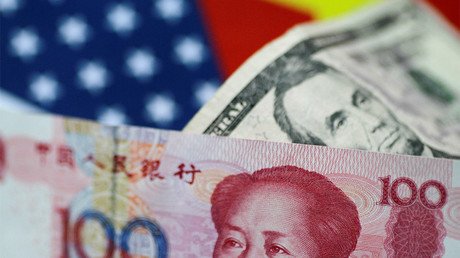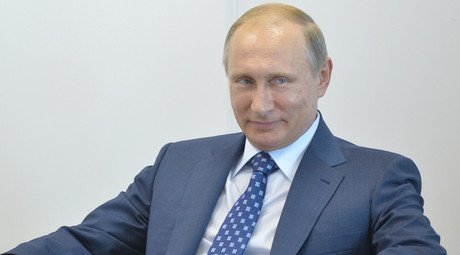Death by a thousand cuts: China’s yuan-priced crude benchmark chips away at petrodollar

China finally launched last month its yuan-denominated crude oil futures that have been in the works for years, after several delays.
The start of the new contract trading was successful, attracting interest from institutional and retail investors, and major commodity trading houses Glencore and Trafigura.
Yet, it’s too soon to call the less-than-a-month-old contract a total success, because it still faces a long road toward building reputation and history, analysts say. They have also identified the single biggest risk factor for western investors—the extent to which China could meddle with government regulation in the yuan crude futures, as Beijing is known for little tolerance toward wild price swings in its markets and has a history of intervening.
This is also the conclusion of China’s biggest crude oil supplier, OPEC. In its April Monthly Oil Market Report, the cartel—which accounts for close to 60 percent of China’s crude oil imports—said that “the extent to which the INE contract is independent from government interference is currently the main risk factor facing western investors, which is in addition to a currency risk, given that the INE is settled in yuan.”
According to Reuters’ John Kemp, possible Chinese intervention on the yuan crude future market could be one of the three elements that could doom the new contract. Citing the paper ‘Why Some Futures Contracts Succeed and Others Fail’, Kemp argues that the third key element to a successful futures contract—public policy should not be too adverse to futures trading—could be the stumbling block to the Chinese crude futures, while the new contract could easily meet the other two criteria for success. These are 1) a commercial need for hedging and 2) a pool of speculators must be attracted to a market.
OPEC, especially its Middle Eastern producers, will be closely watching the futures contract because once established, the Chinese reference crude price could act as a regional benchmark for negotiations of spot or term crude oil prices. The contract is made up of seven medium-sour crudes prevalent in the Chinese market—six freely traded Middle East grades (Basrah Light, Dubai, Masila, Oman, Qatar Marine, and Upper Zakum), and China’s Shengli crude.
“At this level of imports from OPEC, Middle Eastern producing nations will be watching closely as they could, in time, face pressure from their Chinese buyers to adopt this benchmark for pricing their physical crude contracts,” the cartel said in its monthly report.
The fact that OPEC dedicated a special article on the Chinese yuan crude futures in its closely watched report shows that the cartel is taking seriously the possibility that at some point in the future, its Middle Eastern members may have to price the oil they sell to China versus a Chinese crude benchmark.
While the official goal of the new futures contract is to establish a regional benchmark for more useful pricing of the crude grades prevalent on the Chinese market, analysts see the yuan oil futures as a step toward China seeking wider acceptance of its currency in global trade, including the oil trade, and establishing a petro-yuan that could challenge, in the future, the dominance of the petrodollar.
China is now the biggest crude oil importer in the world, and the pace of its oil demand growth is capable of influencing the oil market and the trade in the two most traded crude futures in the world, Brent and WTI. So it makes sense for the top crude importer to want to use oil as a means to promote its own currency on international markets.
According to Dr Mohamed Ramady, an energy economist and geopolitical expert on the GCC, the launch of the yuan crude futures contract has two key rationales—politics and pragmatism. On the practical side, such a contract would better reflect the crude grades on the Chinese market that often differ from the grades underpinning the Brent and WTI benchmarks.
On the political front, “Denominating oil contracts in yuan would promote the use of China’s currency in global trade, one of the country’s key long-term goals as an alternative to the dollar – making this even more appealing to sanctions-threatened countries relying on the dollar,” Ramady wrote in The National.
The yuan is still used in less than 3 percent of global trade, but the yuan crude futures contract and China’s push to assert its currency internationally “could perceptibly change in the near future and create the conditions for a respectable challenge to the US dollar,” Ramady said.
Hayden Briscoe, Head of Fixed Income, Asia Pacific, at UBS Asset Management, said in a report just before the Chinese futures launched that “We believe that in the long term this will change how oil is traded globally, create a petro-yuan currency flow, increase the role of the RMB [renminbi - Ed.]as a global trading currency, and compel investors to up their allocations to Chinese financial assets.”
In the longer term, yuan oil trading could shift the structure of the global oil market, but two things need to happen first, Briscoe said. One is that China needs to remove, or substantially reduce, capital controls. The other is that China’s oil suppliers such as Saudi Arabia, Russia, and Iran to agree to accept yuan for their oil exports to China. “This is also taking shape because Russia already accepts RMB for oil exports, as does Iran, and we expect Saudi Arabia to soon begin invoicing China in RMB,” Briscoe wrote.
The yuan crude futures launch is as much practicality as it is politics, but many analysts and OPEC itself see Chinas’ domestic capital market policies as the biggest threat to the contract’s success.
This article was originally published on Oilprice.com

















